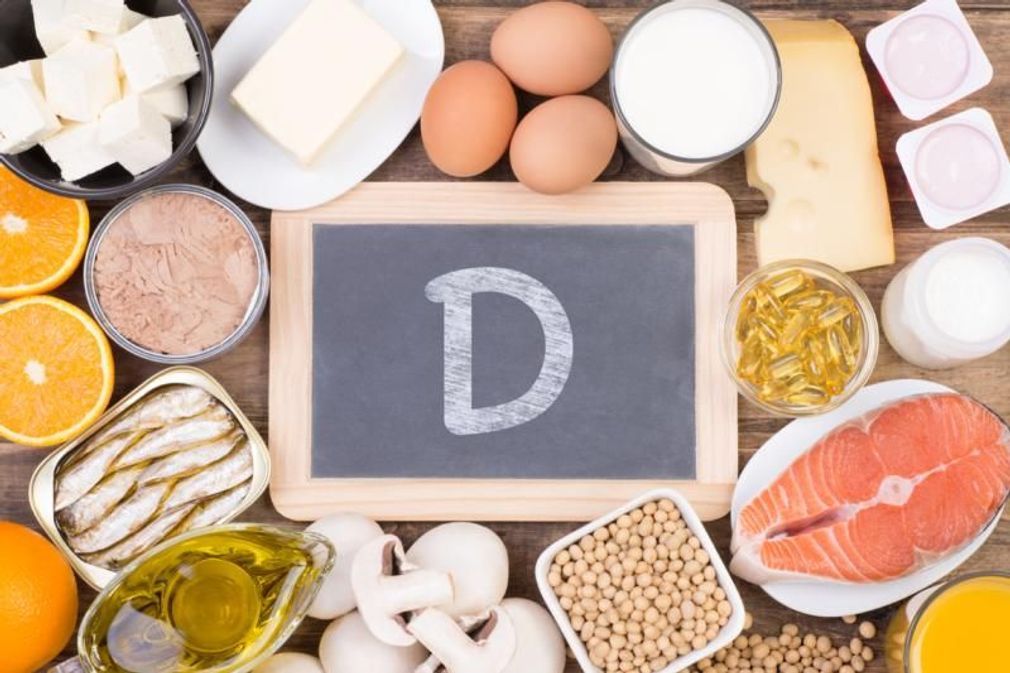
What is vitamin D? What is essential for our body? How to produce it and in which cases can vitamin D supplements be useful? Why is it called the sunshine vitamin? We take stock with Dr Antoine Avignon, endocrinologist.
What is the sunshine vitamin?
The sunshine vitamin is vitamin D. This hormone is so nicknamed because “the vast majority of vitamin D present in our body is synthesized from cholesterol at the level of the skin during its exposure to ultraviolet rays B (UVB) from the sun”explains endocrinologist Antoine Avignon.
Synthesis and absorption of vitamin D: how does it happen?
“Vitamin D is synthesized from cholesterol when the skin is exposed to sunlight, more precisely UVB”, reports Professor Avignon. Under the effect of these rays, a form of cholesterol present in the skin is transformed into vitamin D3 (cholecalciferol). Then, vitamin D3 is transported to the liver where it undergoes a first transformation (we speak of hydroxylation) to become 25-hydroxyvitamin D3 which is the main circulating form of the vitamin and is the one generally measured in the blood to assess levels. of vitamin D in a person. This vitamin finally undergoes a second hydroxylation in the kidney to become 1,25-dihydroxyvitamin D3, which the body can use.
There are two forms of vitamin D in the diet, vitamin D2, ergocalciferolcoming from plant sources, and vitamin D3, cholecalciferolfrom animal sources. “It is a fat-soluble vitamin (soluble in fats) which is therefore found in fatty substances (fatty fish)”, specifies Professor Avignon. Plant sources of vitamin D2 are relatively rare, found only in certain sun-dried mushrooms (shitake). “Vitamins D2 and D3 are absorbed by the upper part of the intestine, duodenum and jejunum with dietary lipids”indicates the endocrinologist.
What are the production factors of vitamin D?
Where to find and produce vitamin D?
The main factors influencing the production of vitamin D include, according to the endocrinologist:
- Exposure to the sun : season, time of day, latitude and sunscreen use affect the amount of UVB rays reaching the skin;
- Skin pigmentation : dark-skinned people have more melanin, which reduces the skin’s ability to produce vitamin D;
- Age : the skin’s ability to produce vitamin D decreases with age. Elderly people are therefore more prone to vitamin D deficiency;
- Exposed skin surface : the greater the surface area of skin exposed, the greater the quantity of vitamin D produced;
- La pollution
The exposure to sunlight necessary to produce adequate levels can thus vary greatly depending on many factors (latitude, season, skin pigmentation, etc.), making dietary or supplement intake necessary in some cases, especially with the modern lifestyle that often limits sun exposure and concerns about skin cancer risks. Yet, “average 5 to 10 minutes of exposure (depending on time of day, season, latitude and skin sensitivity) arms and legs in direct sunlight allows production of approximately 3,000 IU of Vitamin D3″reports Antoine Avignon.
This exhibition can be done in the morning or in the afternoon (depending on the season). “For comparison, nutritional recommendations for older adults are 400 to 600 IU per day“, he emphasizes.
In what foods can we find vitamin D:
According to our specialist, you can increase your vitamin D level by consuming foods rich in vitamin D such as fatty fish (salmon, mackerel, sardines), cod liver oil, eggs (the egg yolk) and dairy products enriched. Vitamin D is also found in the lawyer and the wild mushrooms. On the other hand, while most fruits are rich in vitamin C, they contain a low intake of vitamin D.
What are the benefits of the sunshine vitamin?
What is vitamin D used for?
Vitamin D plays several crucial roles in the body, including:
- It promotes the absorption of calcium and phosphorus, which is essential for bone health (limit the risk of fractures for example) and teeth;
- It contributes to the muscle and nerve function;
- She supports the immune system ;
- It could play a role in the reduction of the risk of certain chronic diseases such as cardiovascular diseases and certain cancers.
“Low vitamin D levels have been associated with a greater frequency of osteoporosis, falls, fractures, an increase in chronic pain and an increase in mortality in cases of COVID”adds the endocrinologist.
What are the daily vitamin D requirements?
According to the National Food Safety Agency (ANSES), the daily requirements for vitamin D are:
- 5.2 micrograms/day for children 1 to 3 years old;
- 2.6 micrograms/day for children 4 to 10 years old;
- 2.9 micrograms/day in children 11 to 17 years old;
- 3.1 micrograms/day in adults 18-79 years old.
These intakes are higher in men than in women.
How to maintain vitamin D levels in winter?
In winter, as exposure to the sun is reduced, it is important to maintain good vitamin D levels in other ways:
- Ensure an esufficient solar exposure and without excess during the summer to build up sufficient stocks before winter in order to avoid vitamin D deficiency.
- Consume foods rich in vitamin D such as fatty fish (salmon, mackerel, sardines), cod liver oil, eggs and fortified dairy products.
- Consider the taking vitamin D supplements in people at risk of deficiency (zero or almost zero sun exposure, repeated falls regardless of age, proven osteoporosis, disease or medications that promote osteoporosis (corticosteroids).
What supplements are there to overcome a vitamin D deficiency?
Vitamin D supplements are used to prevent and treat vitamin D deficiency.
They are available in two forms: Vitamin D2 and D3.
D2 (ergocalciférol)
The vitamin D called D2 or ergocalciferol is of plant origin. It is consumed in the form of drops (Sterogyl) to be administered using a dropper and diluted before administration (before a meal). It is recommended in the event of a deficiency or to prevent a possible vitamin D deficiency. The dosage varies depending on the age of the patient. It is available on medical prescription.
D3 (cholecalciferol)
The Vitamin D3 or cholecalciferol (of animal origin) is often considered to be more effective in increasing and maintaining vitamin D levels in the blood. It comes in the form of an ampoule to be swallowed as a single dose and to be renewed after 3 to 6 months if necessary, after a doctor’s prescription.
What about food supplements?
There are also food supplements to be consumed in the form of tablets, containing vitamin D. These food supplements can indeed contribute to:
- To the intestinal absorption and use of calcium and phosphorus;
- Maintaining normal blood calcium levels;
- The normal growth of children’s bones;
- Maintaining the normal state of bones, muscles, teeth and the immune system;
- At cell division;
- The normal functioning of the immune system of children aged 3 to 18 years.
“If and only if these products contain at least 0.75 micrograms of vitamin D (calciferols) per 100 g, 100 ml or per package if the product contains only one serving” indicates Vidal, the reference medical manual in Europe.
NO to diets, YES to WW!
How do I know if I need vitamin D?
When to take vitamin D? What are the symptoms of a lack of vitamin D?
Some signs of vitamin D deficiency include severe fatigue, bone pain or muscularmuscle weakness (decreased muscle tone), or depressed mood. “The only sure way to know if you need vitamin D is to take a blood test to measure the level of 25-hydroxyvitamin D”, recalls Antoine Avignon. However, this should not be systematic and must be done on medical indication. Conversely, vitamin D should not be consumed in too high a dose.
Finally, according to the National Academy of Medicine, a Vitamin D supplementation is necessary in pregnant women to compensate for a possible deficiency which could lead in particular to a reduction in fetal weight and insufficient bone mineralization. It is often also the case with old peoplethe skin absorbs less with age.
On the other hand, “It should be noted that fat mass reduces the bioavailability of vitamin D by trapping it (fat-soluble vitamin), vitamin D levels are thus frequently low in people living with obesity“, concludes the endocrinologist. Same, in patients who have undergone bariatric surgery (reduction in stomach size).

